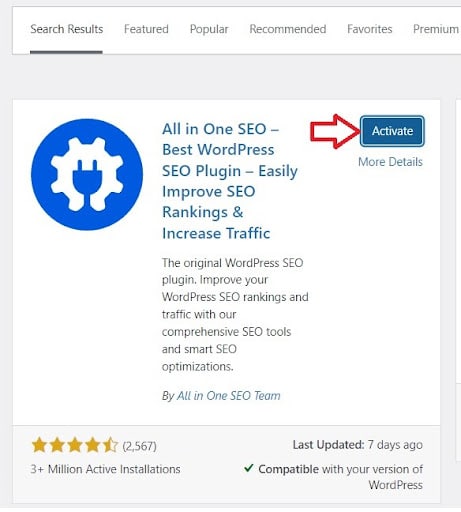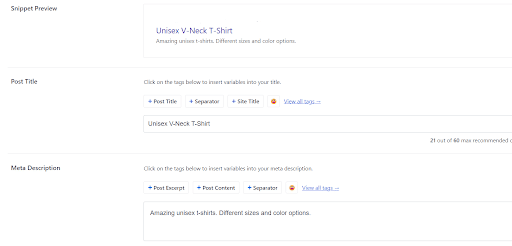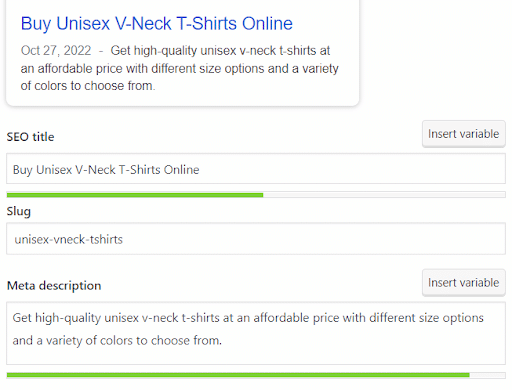
WooCommerce SEO: The Ultimate Guide for Increasing Traffic and Sales
Search engine optimization plays a huge role in helping you generate relevant traffic for your eCommerce store to fuel your conversions. It’s highly recommended to ensure that your store is optimized for search engines especially if you use an open-source platform like WooCommerce.
You don’t have to onboard an SEO expert to help optimize your store. You can do it yourself with ease without having to break the bank. Just follow through our ultimate WooCommerce SEO guide that will help you get more traffic and boost your sales.
Understanding WooCommerce
For those unfamiliar with the platform, WooCommerce is an open source plugin for WordPress that enables users to create an eCommerce store with ease. It’s a customizable content management system preferred by many around the globe for creating and running eCommerce websites.
Being a free plugin makes WooCommerce an ideal choice for eCommerce entrepreneurs who are just getting started with a limited budget.
Does WooCommerce Require SEO?
WooCommerce is an SEO-friendly plugin that runs on WordPress. But, you might have to make a few improvements.
To get more traffic to your eCommerce store, it’s essential that you climb that search engine ranking and rank higher than your competition. This is easier said than done even if you target an audience representing a very unique niche.
So, it’s best that you leverage the right tools and embrace the SEO best practices to optimize your WooCommerce store and out-shadow the competition in your respective niche.
Now, you must be wondering how you can make WooCommerce more SEO friendly and gain more traction on your eCommerce store. Don’t worry. We’re here to help you with that.
Just follow the recommendations in our guide to improving your SEO and get readily recommended by search engines in response to relevant queries. So, without further ado. Let’s start.
Getting Started
To get started, you need to install and set up an AIOSEO plugin on your WordPress site.
As the name suggests, it’s an all-in-one SEO plugin that helps you optimize your eCommerce store for better search engine ranking.
To install the plugin, there are a few easy steps that you need to follow.
Step 1: Log in to your eCommerce store, go to “Plugins” from the admin panel, and click “Add New.”

Step 2: Search the AIOSEO plugin and click “Install Now.”

Step 3: Once the installation is complete, click “Activate” to enable the plugin on your WordPress site.

And that’s it. You’ve successfully set up the AIOSEO plugin.
Optimize Pages for Relevant Keywords
Keywords play a major role in helping you attract a relevant audience to your eCommerce store.
People use different phrases to look for their preferred products when making purchases online. Search engines then assess users’ queries and show best-suited recommendations.
To rank among the top recommendations, you need to optimize your WooCommerce store’s product and category pages as per the keywords that are readily used by your target audience.
Selection of the right keywords is important if you don’t want your store to be flooded with junk traffic. To explore keywords that best represent your niche, you can use keyword research tools like Semrush.
You can also take inspiration from the queries your competitors are targeting and come up with a stellar targeting strategy of your own.
Once you’ve found the right keywords, optimize your product and category pages to optimize your store for search engines.
Optimize Product Titles and Descriptions
To rank higher than your competition, it’s important that you use SEO-friendly product titles and descriptions for your store’s listings.
When a search engine recommends your store’s product in response to a particular query, the first thing user sees is your product title and description.
SEO-friendly product titles and descriptions help you get more eyeballs online. Plus, you get to showcase your store products to the right audience and score more conversions.
To optimize the titles and descriptions of your products, edit your product pages and head over to AIOSEO settings in the snippet section. There, you’d see your current product title and description.

There are three things that you should consider when optimizing your product titles and descriptions:
- Product information
- Keywords
- Intent
It’s highly recommended that you do not create misleading titles or descriptions to trick users into visiting your store. Not only will this damage your brand’s image but can also get your WooCommerce store penalized by search engines.
Here’s an example of how you can optimize a bland product title and description in the above image. The current title “Unisex V-Neck T-Shirt” can be modified into “Buy Unisex V-Neck T-Shirts Online.”
Similarly, the product description “Amazing unisex t-shirts. Different sizes and color options.” can be changed to “Get high-quality unisex v-neck t-shirts at an affordable price with different size options and a variety of colors to choose from.”
The altered product title and description incorporate relevant product information, the appropriate keyword(s), and the intent to attract a relevant audience.
Update URLs
Once you’ve optimized the titles and product descriptions, the next step is to optimize the URLs of your pages.
WooCommerce uses your product title as the URL for a particular listing by default. However, it’s highly recommended that you optimize the URL and ensure that the slug contains relevant keywords.
The length of your URL is also important. So, make sure that your slug is comprised of 4 words or fewer.
To do that, you have to edit your page and go to the snippet section to modify the slug.

Optimizing your permalinks will help improve your store’s overall SEO score and its search engine ranking.
Enable Breadcrumbs
Breadcrumbs play a key role in optimizing your WooCommerce store for search engines. They help search engines to understand your website’s structure and facilitate users to navigate your site with ease.
Since user experience is important for most search engines, especially Google, breadcrumbs enable you to gain an extra advantage in rankings over the competition.
With AIOSEO, you can enable breadcrumbs for your store’s products. All you have to do is access AIOSEO’s “General Settings” from your admin panel and enable breadcrumbs.

The plugin will automatically add breadcrumbs schema markup to your website’s code. Yes. It’s that easy.
Add Alt Text to Product Images
People readily use image search to quickly find the products they’re looking for. Yet, most eCommerce sites take it for granted and leave their images unoptimized.
As a result, they miss out on an opportunity to attract a huge chunk of traffic that seeks preferred products via image search.
You can leverage image search and route relevant traffic to your WooCommerce store by simply adding “Alt Text” to your product images.
Alt text, also known as alternative text, is an HTML attribute that enables you to describe images on your site. The site then displays the alternative text if the browser is unable to fetch a particular image.
You can easily add alt text to your product images while uploading them to your site or by simply editing your old images from the media library.

Start a Blog
One of the most effective ways to improve your store’s SEO and increase your traffic is to start a blog. By creating content around your niche and shoulder niches, you increase the chances for your store to rank higher on targeted keywords.
Creating awareness is the first step to acknowledging conversions. Through your blog, you can educate people who look for products online and help them make informed buying decisions.
Blogging is one of the best ways of gaining authority in your industry and building trust. It helps you connect with a relevant audience and boost your brand’s reach to get more traction organically.
Remember, creating content around the right keywords is the key. So, if your WooCommerce store already has a blog, make sure that your previous content is also optimized using relevant keywords.
Search engines prefer fresh content and consider it an important factor when determining a website’s ranking. So, stay consistent. Try and publish at least 3 blogs in a week if you can’t post on a daily basis.
Reduce Your Site’s Load Time
The load time of your WooCommerce store has a major impact on its search engine rankings. Search engine giants like Google consider user experience when ranking or recommending a site and the load time affects it greatly.
Keeping other factors aside, websites that load faster tend to rank higher than the ones that don’t.
So, it’s best that you improve the load time of your WooCommerce store in order to climb the SERPs and get more traffic. Otherwise, you’ll literally bleed conversions with every passing second.
Here are a few tips that will help you decrease your website’s load time:
- Use image-based content in moderation
- Always use compressed images
- Practice minimal use of redirects
- Enable browser caching
- Remove unnecessary plugins from your site
Use Reliable Web Hosting
Having reliable web hosting is important. Imagine users landing on your site and seeing status codes for server errors. They’d immediately exit and probably never visit your store again.
A reliable hosting service ensures a seamless user experience by enhancing the performance of your site. This not just helps you improve your search engine rankings but also enables you to score more conversions.
If you’re just getting started, it’s highly recommended that you consider managed WordPress hosting services such as WP Engine for an effortless website management and maintenance experience.
And that wraps up our WooCommerce SEO guide for increasing your store’s traffic and sales. If you’re just getting started with WooCommerce, check out our Blog and Resource Center for more content on how to use WooCommerce to its full potential.











